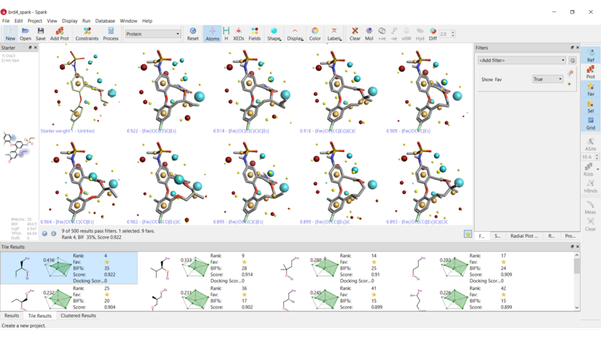Spark™
Macrocyclization
Drug difficult binding pockets using ligand macrocyclization
Predict effective macrocyclization strategies
Macrocyclization of pharmaceutical compounds presents several advantages such as diverse functionality, favorable drug-like properties; and increased selectivity. Macrocycle formation using Spark can be a beneficial technique for drug discovery scientists, in helping to find targets for ‘difficult to drug’ binding pockets.
- Import the starter ligand from a molecule or protein structure and select which regions should be joined by the cyclization process
- Find suitable fragment linkers by running a search on a large collection of molecular databases
- Product structures are formed by merging the linkers with the starting molecule, and subsequently scored based on their electrostatic and shape similarity to the starting molecule
Selecting the most promising candidates to move forward
Once the experiment is completed, results can be displayed using different views:
- The 'Standard Results' table shows individual results, sorted by score
- The 'Clustered Results' table shows the results sorted into chemical families with a ‘parent’ molecule chosen and displayed for each family.
- The 'Tile Results' table shows a consolidated and friendly view of the results.
Additionally, results can be annotated and tagged to facilitate collaboration across teams. Promising candidates can be labeled as favorites, filtered, and exported directly into Flare™, for in-depth analysis with a variety of methods.
 Results from the Spark macrocyclization experiment, displayed using the 'Tile' results view.
Results from the Spark macrocyclization experiment, displayed using the 'Tile' results view.